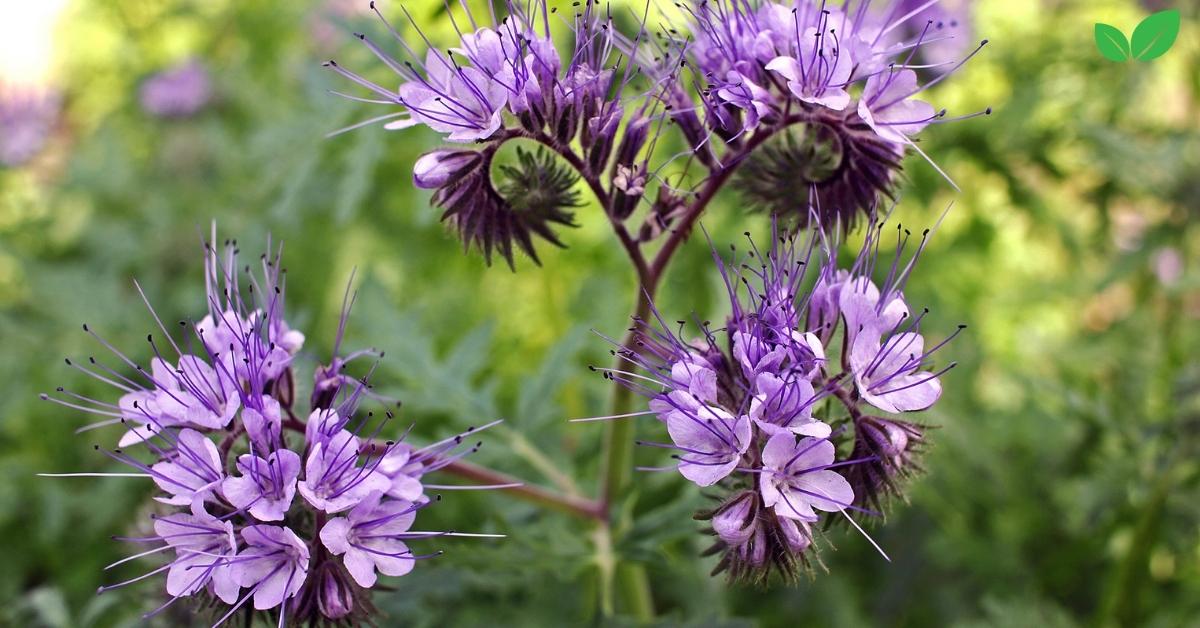Phacelia tanacetifolia, commonly known as lacy phacelia or blue tansy, is a hardy annual plant native to the southwestern United States and northern Mexico. Known for its beautiful, lavender-blue flowers and fern-like foliage, lacy phacelia has become popular worldwide for its value as a cover crop, pollinator plant, and erosion-control species. Its ecological contributions extend far beyond its aesthetic appeal, as it supports biodiversity, promotes soil health, and benefits agricultural systems.
This article examines the environmental niche of Phacelia tanacetifolia, focusing on its native habitat, adaptations, interactions with other species, and ecological roles. We will also explore the plant’s benefits in agriculture, including its role as a cover crop and pollinator attractor, and discuss the conservation challenges it faces. Understanding the ecological significance of Phacelia tanacetifolia can help us appreciate its role in sustainable agriculture and ecosystem health.
Overview of Phacelia Tanacetifolia: Characteristics and Habitat
Phacelia tanacetifolia is a member of the Boraginaceae family, characterized by its unique flower structure, adaptability, and rapid growth. It is primarily found in dry, open habitats such as deserts, grasslands, and scrublands, but it has been successfully introduced to other regions due to its resilience and ecological benefits. Lacy phacelia is often used as a cover crop or in wildflower meadows, where it contributes to soil health, attracts pollinators, and improves biodiversity.
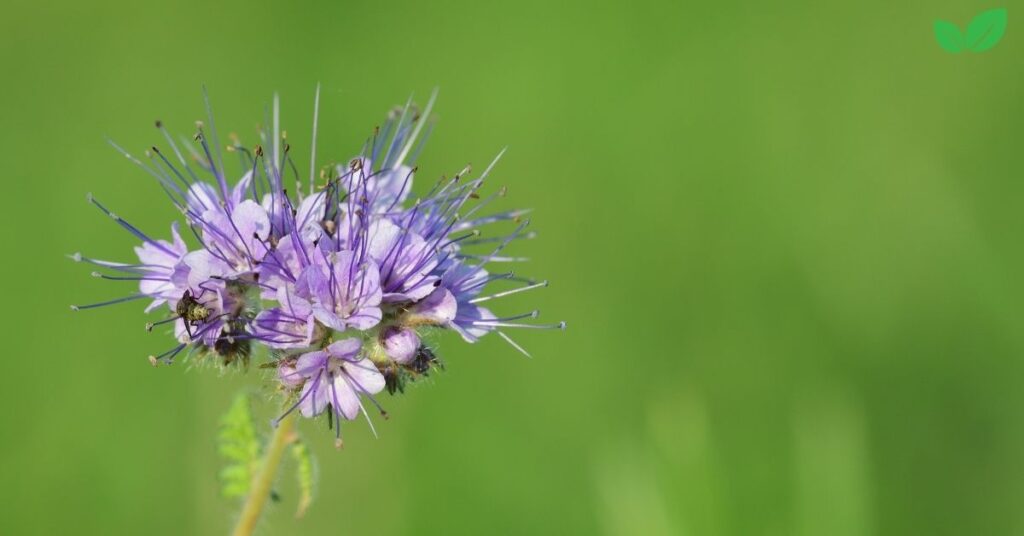
1. Physical Characteristics
Lacy phacelia grows up to 1-3 feet in height and features delicate, fern-like leaves that resemble those of tansy, a common herb, hence the name “tanacetifolia.” Its flowers are arranged in coiled clusters known as “scorpioid cymes,” which gradually unfurl as the plant blooms. The small, lavender-blue flowers are fragrant and rich in nectar, making them highly attractive to pollinators, including bees, butterflies, and hoverflies.
Each flower produces abundant nectar and pollen, which are easily accessible due to the open, tubular structure of the blooms. This accessibility makes Phacelia tanacetifolia one of the most popular plants for attracting beneficial insects in agriculture and natural landscapes.
2. Native Habitat and Distribution
Phacelia tanacetifolia is native to arid regions of the southwestern United States and northern Mexico, where it thrives in dry, sandy soils and full sunlight. Its natural habitat includes desert grasslands, scrublands, and other open areas with well-drained soil. Despite being native to arid environments, it is adaptable to a wide range of climates and soil types, which has allowed it to spread to other regions worldwide.
In its native habitat, Phacelia tanacetifolia plays an essential role in stabilizing soil, conserving moisture, and providing a food source for pollinators. Its drought tolerance and rapid growth make it an excellent pioneer species for restoring degraded land and enhancing soil fertility in marginal areas.
Adaptations of Phacelia Tanacetifolia to Its Environment
Phacelia tanacetifolia possesses several adaptations that enable it to thrive in diverse environmental conditions, from arid deserts to temperate agricultural landscapes. These adaptations make it a resilient and valuable plant in both natural and cultivated ecosystems.
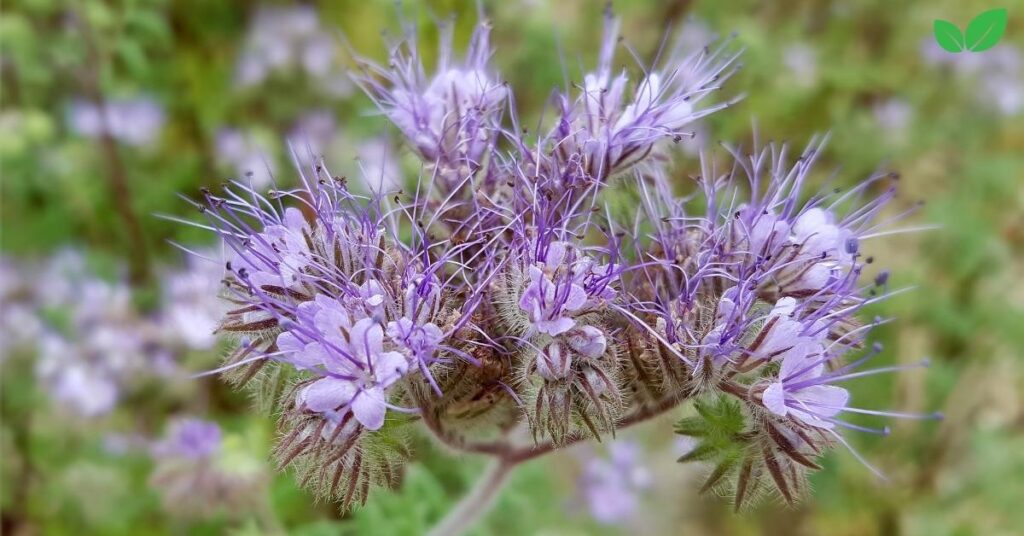
1. Drought Tolerance and Water Efficiency
One of the most significant adaptations of Phacelia tanacetifolia is its drought tolerance. In its native arid habitats, water availability is limited, and the plant has evolved strategies to conserve moisture. Its leaves have a slightly hairy texture, which helps reduce water loss by minimizing evaporation. This adaptation is particularly beneficial in hot, dry environments, where water retention is crucial for survival.
The plant’s roots are relatively shallow but spread out to capture any available moisture, allowing it to access water efficiently. This shallow root system is advantageous in arid environments, as it allows the plant to quickly absorb moisture from brief rainfall events, maximizing its water uptake in dry conditions.
2. Rapid Growth and Short Life Cycle
Phacelia tanacetifolia has a fast-growing, annual life cycle, which enables it to complete its life stages within a short time frame. This rapid growth allows it to establish itself quickly, providing ground cover and reducing erosion in newly disturbed areas. In agriculture, this quick-growing characteristic is especially beneficial for cover cropping, as it provides farmers with an effective solution for erosion control and weed suppression between planting cycles.
Its short life cycle also allows Phacelia tanacetifolia to take advantage of brief periods of favorable conditions, such as short rainy seasons in arid climates. By completing its life cycle quickly, it can produce seeds that remain viable until the next suitable growing season.
3. Resilience to Different Soil Types
Phacelia tanacetifolia is highly adaptable to different soil types, including sandy, rocky, and low-nutrient soils. Although it prefers well-drained soils, it can tolerate nutrient-poor conditions, making it suitable for use in degraded or marginal lands. Its adaptability to various soil types has facilitated its spread to many regions outside its native range, where it serves as a valuable plant for soil improvement and erosion control.
In addition to being tolerant of low-nutrient soils, Phacelia tanacetifolia contributes to soil health by adding organic matter as it decomposes. This enrichment process improves soil structure, enhances water retention, and provides nutrients that benefit other plants.
Ecological Roles and Benefits of Phacelia Tanacetifolia
Phacelia tanacetifolia is widely recognized for its ecological roles and benefits in supporting biodiversity, promoting soil health, and enhancing agricultural productivity. These contributions make it a valuable component of both natural ecosystems and sustainable farming practices.
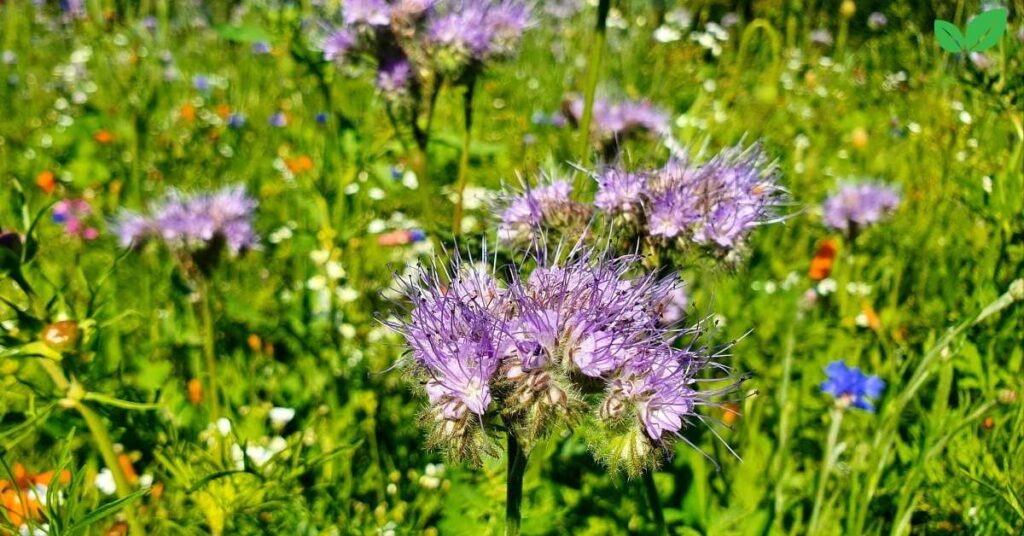
1. Attracting Pollinators and Beneficial Insects
One of the most important ecological roles of Phacelia tanacetifolia is its ability to attract pollinators and beneficial insects. The plant’s fragrant, nectar-rich flowers are a favorite of bees, butterflies, and hoverflies, which rely on its blooms as a food source. Honeybees, in particular, are drawn to lacy phacelia, making it a valuable plant for beekeepers and a vital contributor to pollination services in agricultural systems.
Phacelia tanacetifolia also attracts predatory insects, such as hoverflies and lacewings, which help control pest populations in agricultural fields. By attracting these beneficial insects, lacy phacelia contributes to integrated pest management, reducing the need for chemical pesticides and supporting healthier ecosystems.
2. Improving Soil Health and Preventing Erosion
Phacelia tanacetifolia is widely used as a cover crop because of its ability to improve soil health and prevent erosion. Its dense foliage provides ground cover that protects soil from wind and water erosion, especially in newly planted fields or disturbed areas. By covering the soil, it also suppresses weed growth, reducing competition for water and nutrients.
As the plant decomposes, it adds organic matter to the soil, enhancing its fertility and structure. The increased organic matter improves water retention and nutrient availability, making the soil more suitable for other crops. In this way, Phacelia tanacetifolia contributes to soil conservation and regeneration, supporting sustainable land management practices.
3. Enhancing Biodiversity in Cultivated and Natural Areas
Phacelia tanacetifolia supports biodiversity by providing food, habitat, and shelter for a variety of species. Its flowers attract not only pollinators but also a range of other insects that contribute to the overall health of the ecosystem. This attraction helps support diverse populations of insects, birds, and small animals, which rely on these insects for food.
In agricultural landscapes, lacy phacelia helps create habitats that encourage beneficial insect populations, promoting ecological balance and reducing reliance on chemical inputs. In natural areas, the plant supports biodiversity by contributing to a mosaic of plant species that provide different resources for wildlife throughout the year.
Uses of Phacelia Tanacetifolia in Agriculture and Land Management
Phacelia tanacetifolia is a valuable plant in sustainable agriculture and land management due to its adaptability, ecological benefits, and ease of cultivation. Its uses range from soil improvement and erosion control to pest management and pollinator support, making it an ideal choice for farmers, gardeners, and conservationists.
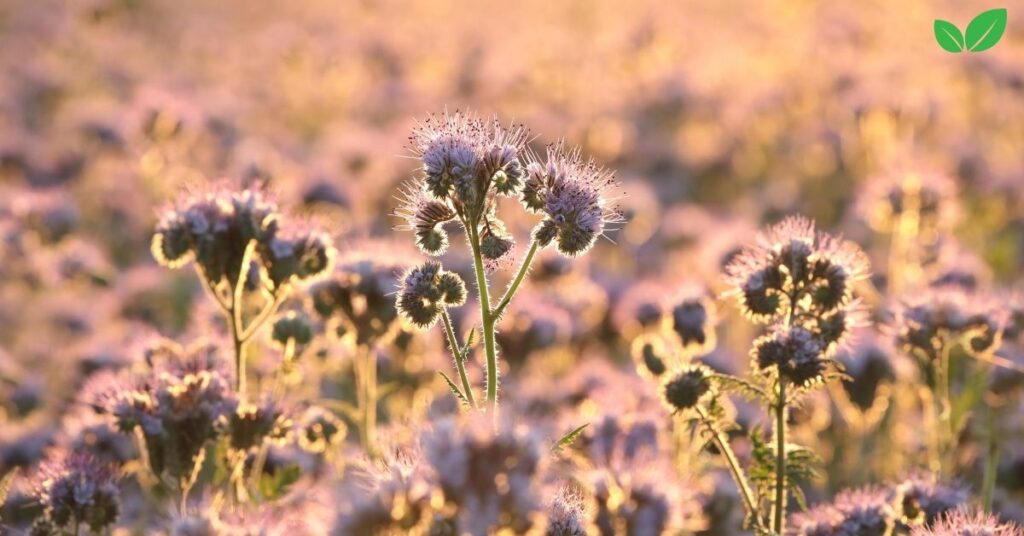
1. Cover Crop for Soil Improvement
One of the primary uses of Phacelia tanacetifolia in agriculture is as a cover crop, where it serves to protect and enhance soil health. By providing ground cover, lacy phacelia reduces erosion, suppresses weeds, and improves soil structure. Farmers often use it as a “green manure” crop, allowing it to grow and then tilling it back into the soil to increase organic matter and nutrient content.
The addition of organic matter from decomposing lacy phacelia improves soil tilth, enhances water infiltration, and provides a habitat for beneficial soil microorganisms. These benefits make it a valuable crop for sustainable farming practices, supporting soil health and productivity.
2. Pollinator Support in Crop Production
Phacelia tanacetifolia is highly valued for its ability to attract pollinators, which are essential for crop production. Farmers often plant it near pollinator-dependent crops to increase the presence of bees and other pollinators. This practice is particularly beneficial in fruit and vegetable production, where successful pollination directly affects yield quality and quantity.
In addition to honeybees, the plant attracts native pollinators, enhancing biodiversity and resilience in agricultural landscapes. By supporting diverse pollinator populations, Phacelia tanacetifolia contributes to more reliable crop production and reduces the vulnerability of food systems to pollinator decline.
3. Integrated Pest Management (IPM)
As a key component of integrated pest management, Phacelia tanacetifolia attracts beneficial predatory insects that help control pest populations naturally. Hoverflies, which are drawn to the plant’s flowers, lay their eggs on nearby plants. The larvae feed on aphids and other pests, providing a natural method of pest control.
This pest management function reduces the need for chemical pesticides, making it an environmentally friendly option for farmers. By promoting ecological balance and pest control through natural means, Phacelia tanacetifolia supports healthier crops and reduces chemical input costs for farmers.
4. Use in Habitat Restoration and Conservation
Phacelia tanacetifolia’s adaptability and rapid growth make it an ideal candidate for habitat restoration and conservation projects. It is often used to stabilize soil in disturbed areas, such as construction sites, mine reclamation areas, and degraded landscapes. By establishing a vegetative cover, lacy phacelia helps prevent soil erosion and promotes the regeneration of native vegetation.
In conservation settings, the plant supports biodiversity by creating habitats that attract pollinators and other wildlife. Its role in soil stabilization and habitat creation contributes to the recovery of ecosystems impacted by human activity or environmental stressors.
Conservation Challenges and Environmental Impacts of Phacelia Tanacetifolia
Although Phacelia tanacetifolia offers numerous ecological and agricultural benefits, it also faces conservation challenges and potential environmental impacts. These issues are related to habitat loss, competition with native species, and climate change.
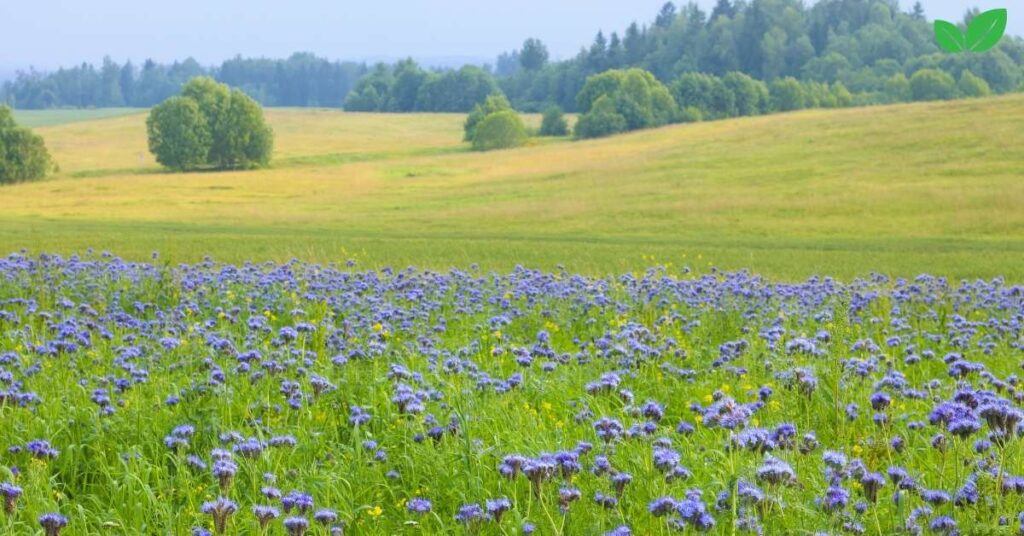
1. Habitat Loss and Fragmentation
In its native range, Phacelia tanacetifolia may face habitat loss and fragmentation due to urbanization, agriculture, and land development. As natural habitats are converted for human use, populations of native plants like lacy phacelia can become isolated, reducing their genetic diversity and resilience.
Conserving natural habitats and promoting sustainable land management practices are essential for protecting native populations of Phacelia tanacetifolia. Restoration projects that incorporate native plants like lacy phacelia help preserve biodiversity and ecosystem services.
2. Invasiveness Concerns in Non-Native Regions
While Phacelia tanacetifolia is widely used in agriculture and landscaping, it has the potential to become invasive in certain non-native regions. Its ability to establish quickly and spread can lead to competition with native vegetation, especially in ecosystems where it has no natural checks or balances.
To prevent unintended ecological impacts, it is important to monitor its growth and manage its spread in non-native areas. Responsible planting practices and careful management can help ensure that Phacelia tanacetifolia remains a beneficial plant without disrupting local ecosystems.
3. Climate Change and Environmental Stress
Like many plant species, Phacelia tanacetifolia may be affected by climate change, which can alter precipitation patterns, temperature ranges, and growing seasons. Changes in climate can impact its growth, flowering, and interactions with pollinators, potentially reducing its effectiveness as a cover crop and pollinator plant.
In response to climate change, conservation and agricultural practices that promote resilience are essential. Adaptive strategies, such as diversifying cover crops and integrating native plants into agricultural systems, can help mitigate the effects of climate change on Phacelia tanacetifolia and other valuable plant species.
Conclusion
Phacelia tanacetifolia is a remarkable plant with diverse ecological and agricultural benefits. From supporting pollinators and beneficial insects to improving soil health and controlling erosion, lacy phacelia plays an essential role in promoting biodiversity and sustainable land management. Its adaptations to drought, rapid growth, and resilience make it a valuable plant in both natural and cultivated ecosystems.
However, conservation challenges, including habitat loss and climate change, highlight the need for responsible management and sustainable planting practices. By appreciating and conserving Phacelia tanacetifolia, we support ecosystem health, enhance agricultural productivity, and contribute to a more resilient and balanced environment.
FAQs
1. What is Phacelia tanacetifolia commonly used for in agriculture?
Phacelia tanacetifolia is commonly used as a cover crop, attracting pollinators, improving soil health, and providing natural pest control in agricultural settings.
2. How does Phacelia tanacetifolia support pollinators?
Its nectar-rich, accessible flowers attract a variety of pollinators, including bees, butterflies, and hoverflies, which are essential for crop pollination and ecosystem health.
3. Can Phacelia tanacetifolia become invasive?
While beneficial in controlled environments, Phacelia tanacetifolia has potential to become invasive in certain non-native regions and should be managed responsibly.
4. How does Phacelia tanacetifolia improve soil health?
As a cover crop, it prevents erosion, suppresses weeds, and adds organic matter to the soil as it decomposes, enhancing soil fertility and structure.
5. What challenges does Phacelia tanacetifolia face in its native range?
Challenges include habitat loss and fragmentation due to urbanization and agriculture, which can reduce population diversity and resilience.
6. Can Phacelia tanacetifolia help with climate change adaptation?
Yes, it supports biodiversity, soil conservation, and pollinator populations, which are all crucial for building climate-resilient agricultural and natural ecosystems.
Read More: Types of Wildflowers: An In-Depth Exploration of Their Environmental Niche

